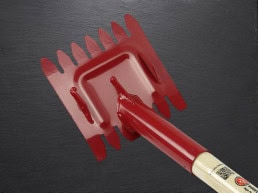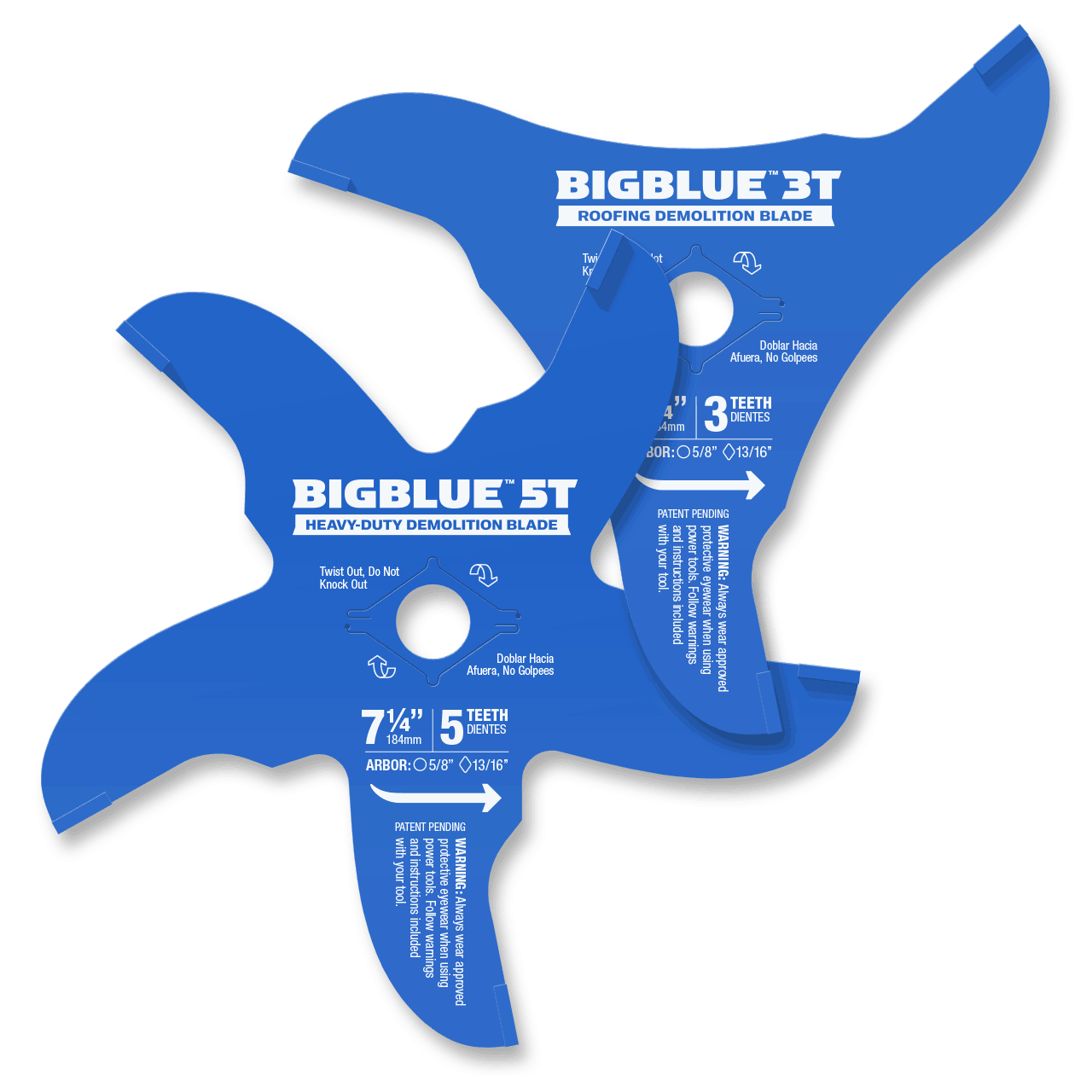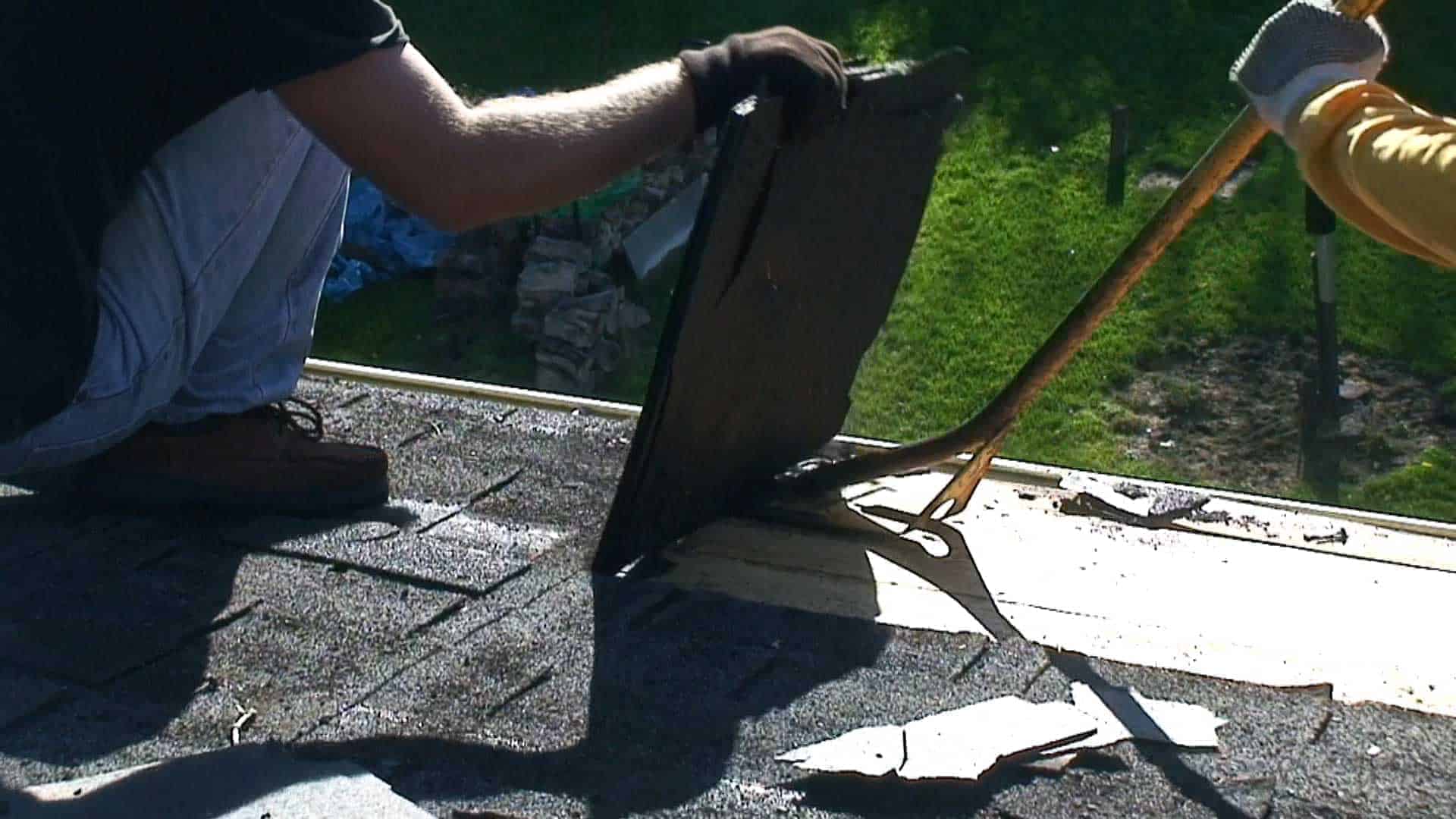The right tools can make us faster, stronger, and more profitable. When it comes to shingle tear-off tools, there are many that can improve the shingle tear-off process, but most don’t live up to their claims. We’ve tried many of them and here are the tools we’ve found most helpful during a shingle roof tear-off. We’ve broken our list of recommendations down into five categories.
Five Types of Shingle Tear-off Tools
1. Prying Spades:
Prying spade’s fall into a few categories. The first is pitchforks. Some roofers prefer prying off old shingles with a pitchfork but the drawback is the nails don’t always come out along with the shingles. In situations where the nails are very difficult to remove, some roofers find it easier to remove all the shingles and go back and nail down the nails.
The next type of tear off bar would be the large wide faced steel spade such as the shingle eater. These bars work well when tearing off shingles on top of a plywood roof deck or shingles that have into sections before tearing off. The wide face enables the laborer to tear off more area but the wider face puts more resistance against the bar because there are more nails to pry out.

Another type of bar is the smaller faced tear-off spade such as the Original Red Ripper®. These bars work well for tearing off shingles where the nails are difficult to remove. They are light and have a D handle so they are easy to maneuver. They have teeth on the front and back of the bars base so it’s possible to pry off in either direction. This comes in handy when tearing off in confined areas such as roof returns. These tear-off tools also have tapered teeth which make it easier to remove shingles stuck to ice shield or to pry underneath flat roofing materials.
The third type of spade is like the last but has a built in wedged heel for added prying leverage. The trade off of the wedge is that it alleviates the teeth in the back side of the bars base.
Another type of roofing spade is the mechanical (pneumatic) type. This saves the operator the energy of having to pry manually. These tools work best in open areas and where the roof deck is smooth and not sloped too much.
2. Power Saws:
The power saw is another shingle tear-off tool worth considering. The old adage “divide and conquer” holds true, especially when there are two or more layers of shingles. It’s the same solution commercial roofers use with gas powered roof cutters. The cut lines make easy entry points for any tear off tool. They also eliminate the need of breaking through the shingles with a roofing spade.
One of the biggest advantages of using a power saw is clean up. Shingles cut into sections hold together which makes clean up quick and easy. The problem is that traditional saw blades cannot hold up cutting through shingles. They gum up, or warp, or lose their teeth. They just aren’t designed to cut through shingles.

To solve this problem, we designed two completely new 7-¼ inch demolition blades for circular saws and worm drive saws designed to cut through shingles and flat roofing materials. They are BigBlue™ 5T Heavy-Duty Demolition Blade and BigBlue 3T Roofing Demolition Blade. Their unique design allows roofers to cut for a long time without having to unclog the saw or change blades. BigBlue™ 3T is designed for flat roofing such as tar and gravel roofs. BigBlue™ 5T is designed for demolition of shingles – including roof decking.
Along with saw blades we have developed a tool that makes long cuts made easier, safer, and faster. RipCart™ is a demolition tool that allows you to make cuts without hunching or crawling. Users set the blade depth, walk behind the cart like a push lawn mower, and easily control the circular saw. Like pneumatic roofing spades, the RipCart has slope limitations.
3. Magnets:
Roofing magnets are not only handy for ground clean up but also for cleaning off the roof. We find them especially useful on 1 x 6 roof decks where the nails get lodged between the cracks. Rolling magnets are the quickest, but make sure to secure them when they are not in use so they don’t roll off the roof.
4. Hand Tools & Air Chisel:
Hammers and flat bars are a given for cleaning tar off plumbing stacks and chimneys. Another economic tool for these tasks is the air chisel which only costs about $30.00.
5. Flat Shovels and push brooms:
Flat shovels (farmers grain shovels with the D handle) and push brooms are a must for clean up. We have found that push brooms that include a plastic squeegee are great at knocking nails loose from the roof deck. This can save a time as well as your back.
We realize that many roofers are already set in their shingle tear-off tools and techniques. But, we encourage you to keep an open mind, because not all shingle roof tear-offs are the same.
